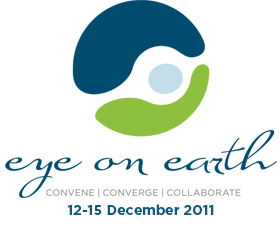 At the Eye On Earth Summit, a special working group has been devoted to crowdsourcing for environmental purposes. The White Paper introducing the discussion is a very clear presentation of the field, and it is useful for a broad audience – from citizens interested into the potential of social media to scientists writing their next grant’s proposal. You can download it here. At some point, the paper reads:
At the Eye On Earth Summit, a special working group has been devoted to crowdsourcing for environmental purposes. The White Paper introducing the discussion is a very clear presentation of the field, and it is useful for a broad audience – from citizens interested into the potential of social media to scientists writing their next grant’s proposal. You can download it here. At some point, the paper reads:
“People are much more likely to engage in sharing valuable data for assessing the status of or changes in their environment if they are able to so using technologies they use every day. This suggests that laptops, cell phones, and vehicles should all be employed as potential interface and/or sensing devices for the collection of environmental data and its documentation.”
Apparently, the best we can do so far in this field is collecting data and visualizing them using websites, apps, maps etc. It is a very important and exciting task, but it still leaves to the user’s brain the task of processing the depicted data and translate them into novel behaviors and strategies. Of course, the policy makers are supposed to do that, but their analysis skills are often poor. There is another option: we could provide these websites, apps, maps etc. with powerful analysis tools producing recommendations to the users toward clearly stated purposes such as reducing emissions, water waste, pollution to given levels. Scientists do not like this option, since they believe themselves to be neutral and the public to appreciate it. But are we sure we prefer neutral scientists, rather than politically oriented scientist telling us what to do to reach a transparent goal using all the possibilities made available by social media?














